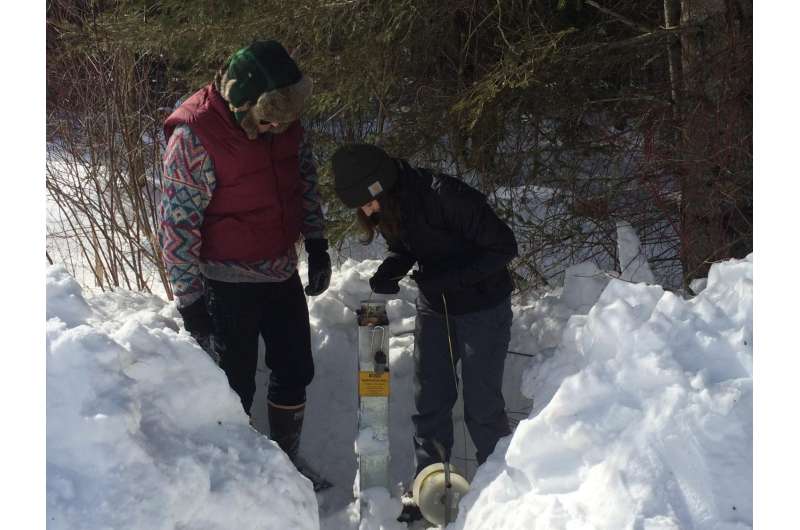New England's glacial upland soils provide major groundwater storage reservoir

A recent study of natural groundwater storage reservoirs in New England by hydrologist David Boutt at the University of Massachusetts Amherst found that upland aquifer systems dominated by thin deposits of surface till - a jumbled, unsorted material deposited by glaciers - make up about 70 percent of the active and dynamic storage for the region.
As Boutt explains, "This is the first time that the relative role of upland vs. valley groundwater storage has been quantified. These results are the first to point to the outstanding importance of these thin glacial sediments in landscape-scale hydrologic budgets. This is really important for understanding how water gets into streams, supplying base flow in streams during summer months and droughts, and for recharging valley fill aquifers."
He adds that the "till reservoir" is traditionally neglected as an important groundwater storage reservoir because of its limited thickness and perceived low conductivity. But his new study highlights "the importance of a process-based understanding of how different landscape hydrogeologic units contribute to the overall hydrologic response of a region."
"Shallow tills of Massachusetts and New England are really important storage reservoirs of water for recharge to alluvial aquifers and for base flow to streams," he adds. This subsurface material fills and drains on a multi-annual basis and serves as the main mechanism to deliver water to valley fill aquifers and underlying bedrock aquifers. Details appear in the journal Hydrological Processes.
For this work, Boutt used 124 long-term groundwater wells distributed across the region to assess how annual local water flow properties and the hydrogeologic setting influence the aquifer system response to climate variability. The area is underlaid by low-storage, fractured metamorphic and crystalline bedrock and criss-crossed by valleys filled with glacial and post-glacial fill sediments. About 60 percent of the total area are uplands covered by thin glacial till, he notes.
The hydrologist points out that the monthly data in this study "contain rich signals of how the water table responds to climatic variability and the impact of hydrogeology on hydrological processes." He cautions, however, that many sites lack detailed geologic logs, local water table maps and detailed hydrogeologic characterization, all of which limit the study's ability to explore detailed questions about a specific site response except in general terms.
Boutt says that with changes in land use and climate, it is important to understand past change in the response of the hydrologic system to detect and predict future impacts.
Further, this analysis yields "important insights into the hydraulic connection of till/bedrock aquifer systems to the overall hydraulic response of the regional system." Even though total storage in upper till is "generally lower than that of the alluvial valley fill, it is clear that the annual active storage in the till is much greater," he adds.
This study "documents the importance of upland aquifer response and dynamic storage to climate variability over decadal time scales. Despite the thin nature of soils and sediments overlying bedrock systems, they play an outstanding role in storing and releasing water to headwater streams and downgradient aquifer systems." Boutt attributes the variability in response to the hydrogeologic setting of the aquifer and properties of the host material.
He concludes, "Trends in aquifer storage when averaged over the 124 wells in the study region show an upward positive trend indicating that the water table has risen over the last 40 years. When the trends are examined over the period of 1970-2010, they display a majority of upward trends despite a lack of upward trends in precipitation and streamflow on annual or seasonal basis. Increases in storage in the aquifers respond to overall increases in precipitation at the multi-annual decadal timescale distributed evenly across aquifer groupings."
More information: David F. Boutt. Assessing hydrogeologic controls on dynamic groundwater storage using long-term instrumental records of water table levels, Hydrological Processes (2017). DOI: 10.1002/hyp.11119
Provided by University of Massachusetts Amherst




















